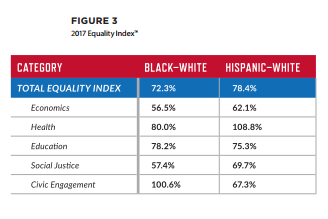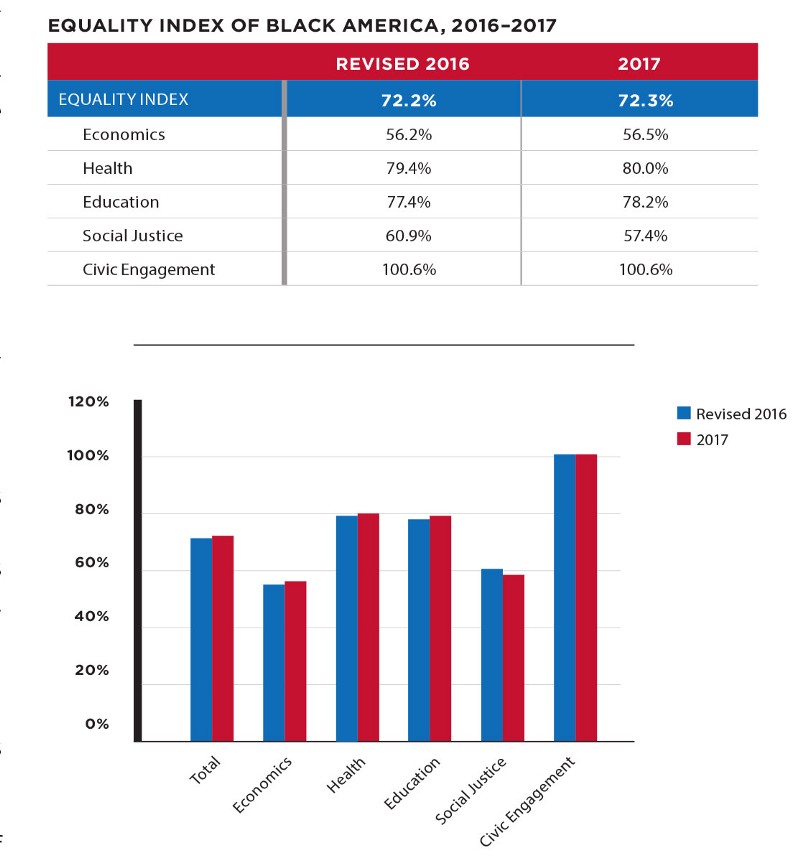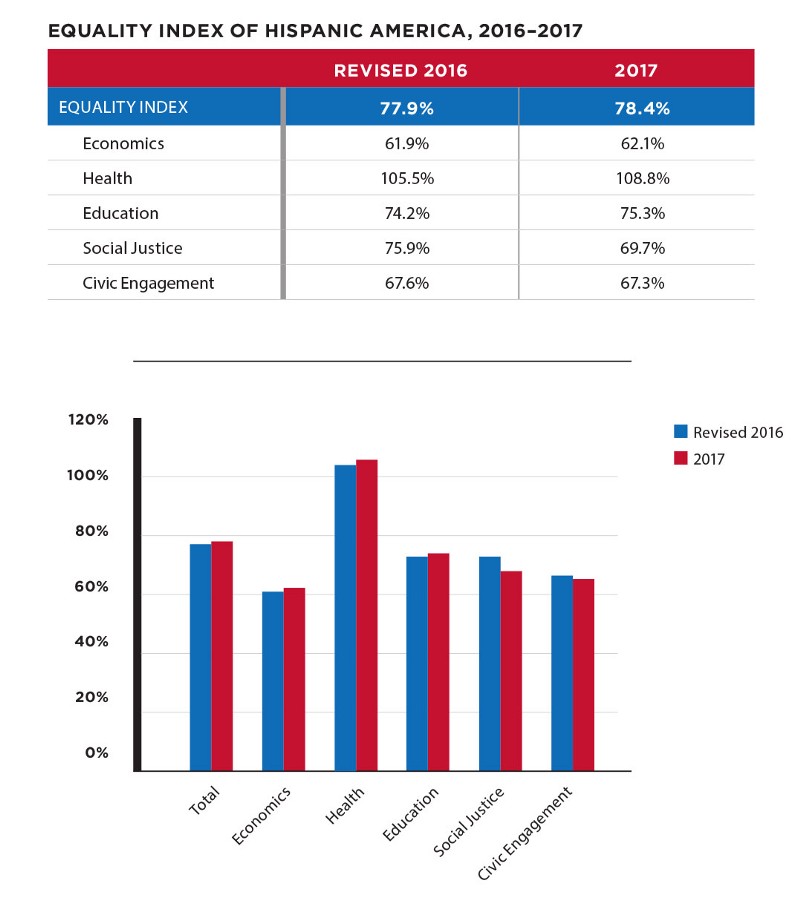This week, the National Urban League released its annual “State of Black of America” report, which analyzes racial progress and inequality across a number of health, economic, education, and social justice outcomes among African Americans and Hispanics. This year’s report carries special significance: It speaks to the legacy of President Barack Obama’s eight years in office, and establishes a baseline by which to measure the Trump administration’s effect on minorities.
The report’s “Equality Index,” which the National Urban League has been calculating for 13 years (for African Americans) and eight years (for Hispanics), compares how these two groups are faring in comparison to white Americans — a score of 100 percent would mean that minorities are faring as well as whites.
In 2017, the Equality Index scores for black and Hispanic Americans were 72.3 percent and 78.4 percent, respectively. “That means that rather than having a whole pie (100%), which would mean full equality with whites in 2017, African Americans are missing about 28% of the pie,” the report states. “Similarly, a Hispanic Index of 78.4% indicates that more than 20% of the pie is missing for Hispanics.”

As the chart to the left, from the Equality Index breakdown, shows, while the total overall index scores represent only a slight increase over last year’s scores of 72.2 percent for African Americans and 77.9 percent for Hispanics, both groups saw more meaningful improvements in certain categories this year.
The chart below, also from the report, illustrates changes in the black-white index between 2016 and 2017:

And here’s how the Hispanic-white index changed this year:

Both African Americans and Hispanics benefited from a few specific trends: declines in the percentage of students with inexperienced teachers, a higher percentage of young people earning post-secondary degrees, falling high school dropout rates, improvements in access to health care and a number of other health outcomes, and an economy that’s finally finding its footing. (While both minority groups experienced a notable decline in social justice scores, the report’s authors attribute this in large part to a change in the way one metric is reported.)
In a presidential scorecard section of the report, the National Urban League concludes that Obama’s eight years in office brought significant improvements for minorities in America — granting him an “Excellent” rating. Here’s Marc Morial, the president and CEO of the National Urban League, writing about Obama’s tenure:
During Obama’s presidency, the economy added 15 million new jobs. The national jobless rate dropped from 7.6% to 4.7%. For African Americans, the jobless rate fell from 12.7% to 7.8%. The high school graduation rate for African Americans increased from 66.1% to 85%. There were 614,000 fewer long-term unemployed. Wages climbed by 3.4%. More than 16 million Americans who were uninsured now have health care coverage, with the uninsured rate for African Americans cut by more than half.
The report optimistically includes a blueprint for a “Main Street Marshall Plan” designed to reduce racial inequities. The plan calls for $4 trillion worth of investments in minority entrepreneurs, early childhood education and public schools, post-secondary education, affordable housing, nutritional assistance, health care in low-income communities, and criminal justice reform.
But the National Urban League isn’t holding out much hope that its Marshall Plan will come to pass anytime soon. Instead, it foresees a potentially grim four years for minorities. President Donald Trump’s budget proposals, the GOP’s ongoing push to repeal the Affordable Care Act, Attorney General Jeff Sessions’ retreat from consent decrees and oversight of police departments accused of racially biased policing, and a general “social cancer of hate” could all damage the painstaking progress minorities have made over the last eight years.
“Recovery from the Great Recession has been slow, but it has been real,” Morial writes. “Now that progress, and much more, is threatened.”





